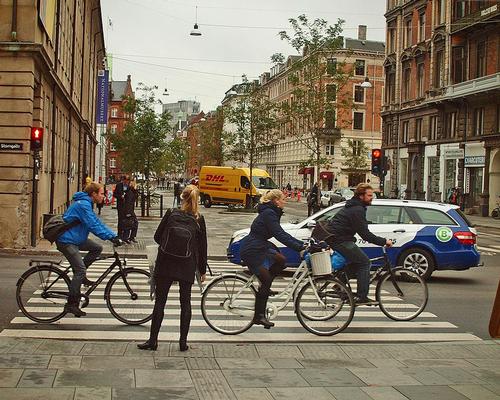29 Mar 2016
Government unveils ambitious new strategy for cycling and walking
BY Jak Phillips

The government has unveiled a new blueprint to boost physical activity and sustainable transport by encouraging more walking and cycling across Britain.
The strategy wants to make active travel “the natural choice for shorter journeys” by 2040 through investment in infrastructure. It includes ambitions to double cycling, reverse the decline in walking, reduce the rate of cyclists killed or seriously injured and increase the number of children walking to school.
Launching a consultation to seek views on the new strategy, transport minister Robert Goodwill said it marked a shift from short term funding streams for cycling and walking to a strategic long term approach.
“The government’s blueprint to encourage more people to cycle and walk will benefit the whole of society by boosting the economy, improving health, cutting congestion and improving air quality,” said Goodwill.
“Realising our ambition will take sustained investment in cycling and walking infrastructure. That’s why we have committed over £300m to support cycling and walking over this parliament and this will increase further when spending on enhancing and maintaining existing infrastructure is taken into account.”
Following the end of the consultation on 23 May 2016, responses will be assessed and a final strategy published in the summer, when the government will also issue guidance to local bodies on developing local plans.
The initial strategy has been met with praise from some quarters, however British Cycling and CTC, the national cycling charity, have warned that "far more ambition" and investment is needed to make a lasting difference and place Britain on par with cycling-friendly countries such as Denmark and the Netherlands.
“The truth is that without sustained funding, this strategy won’t be worth the paper it’s written on,” said British Cycling policy adviser Chris Boardman, who wants the government to commit to £10 per person of cycling funding every year.
“The government’s own figures show that investment is barely at £5 per head. Cycling’s ability to tackle serious societal issues such as obesity cannot be achieved on the cheap.”
Active design has been a hot topic in recent months, especially in light of new research which found cities which strive to promote physical activity gain a significant economic advantage. The University of California study – which was commissioned by Nike and UK charity Sustrans – showed areas which foster physical activity enjoy economic benefits such as higher retail revenues plus lower healthcare and crime costs.
Meanwhile, a recent report from Sustrans highlighted that three quarters of the public want the government to invest more cycling, while another found that the National Cycle Network has saved the UK economy ‘more than £7bn’ since it was established 20 years ago.
Close Window